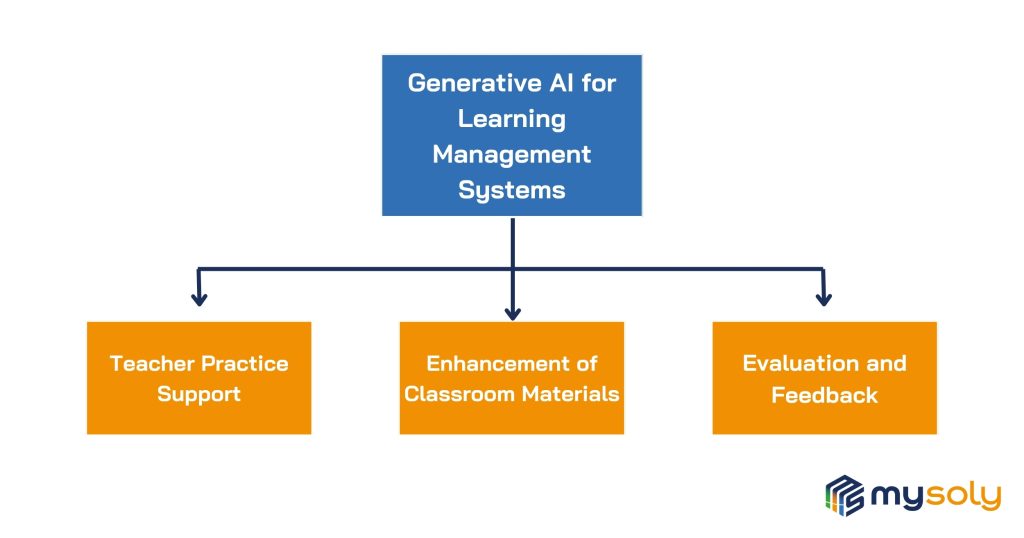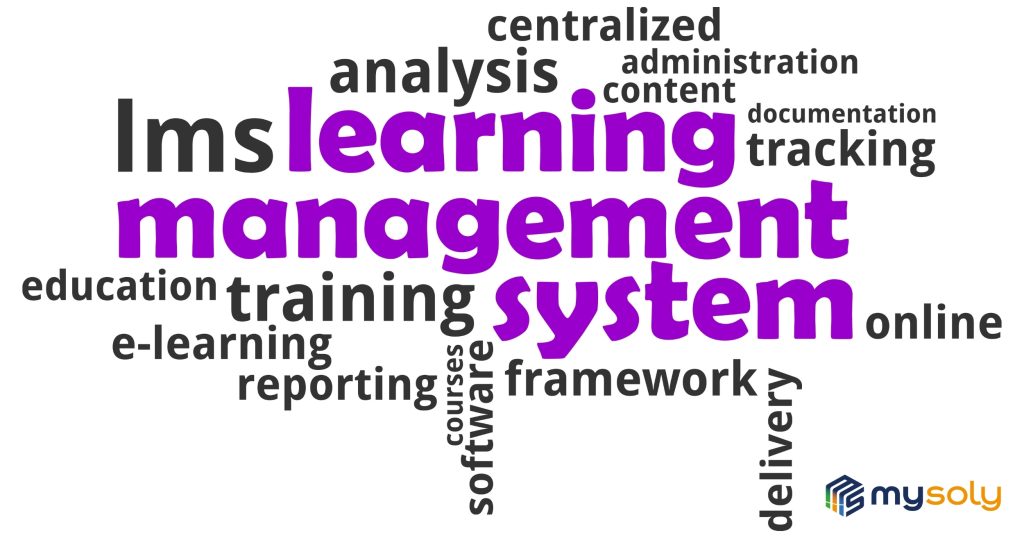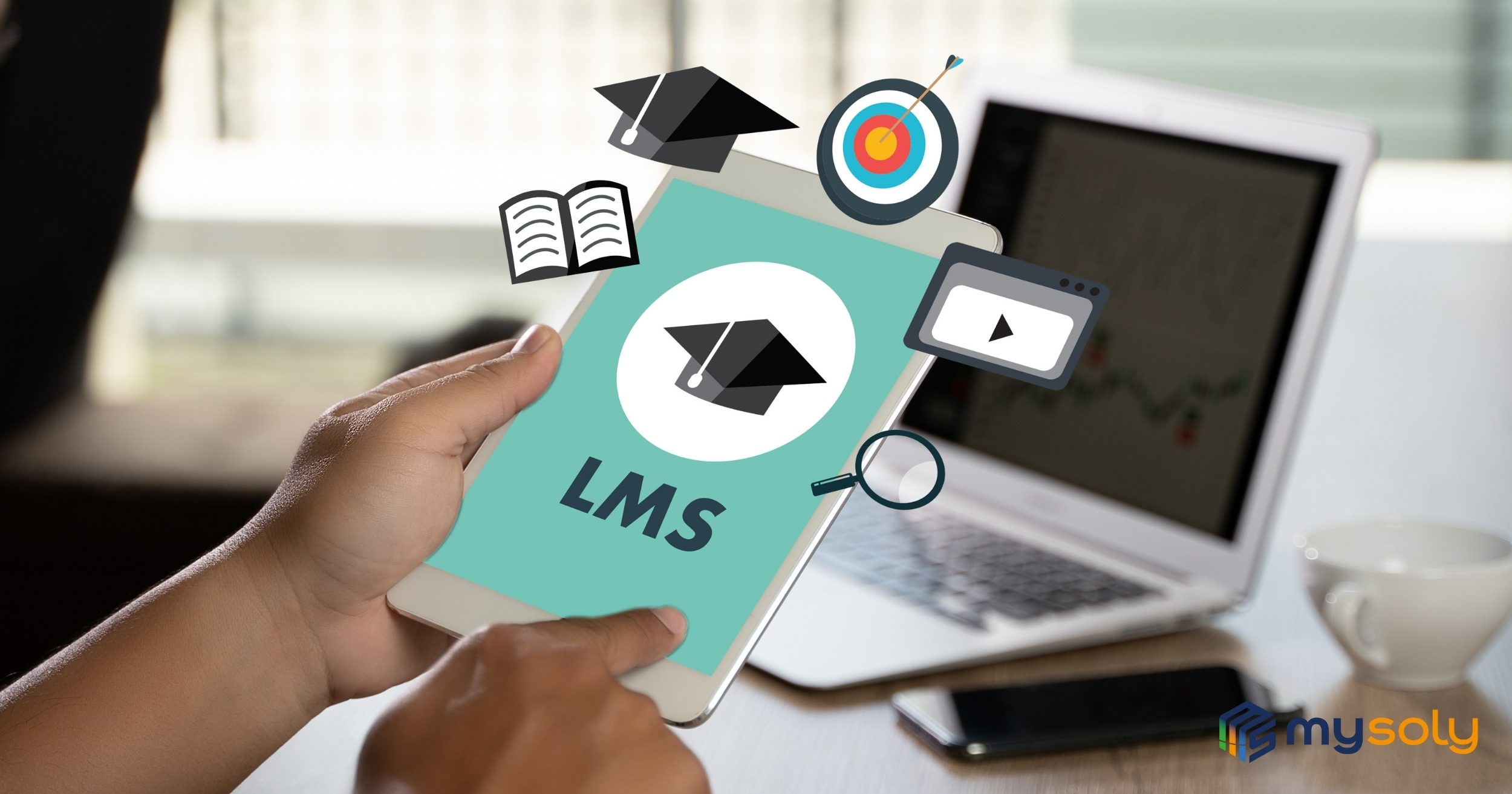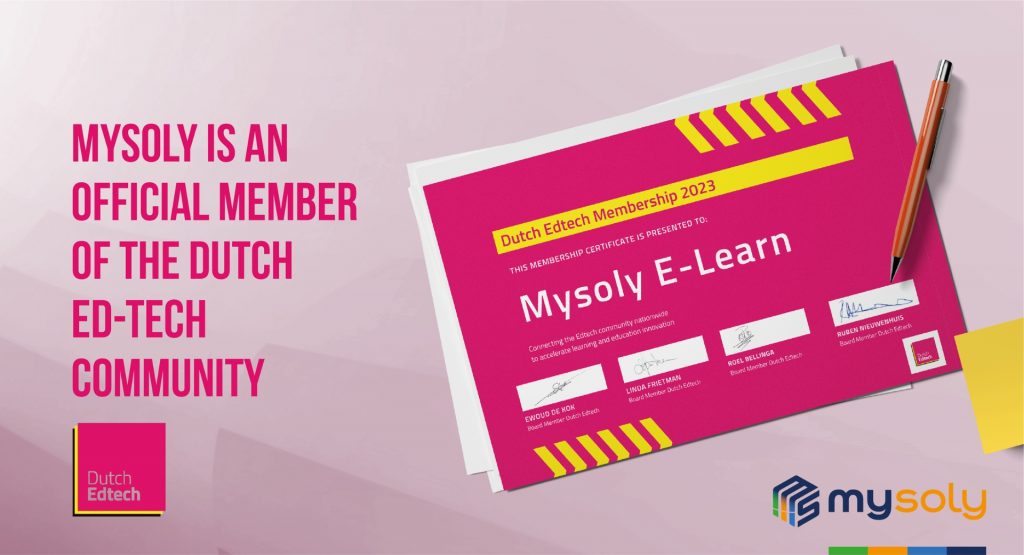Generative AI for Learning Management Systems (LMS)
Introduction
In the ever-evolving landscape of education, Artificial Intelligence (AI) is driving a quiet revolution. As we navigate this digital age, educators, students, and administrators find themselves at the crossroads of tradition and innovation. Textbooks have become e-books, and interactive screens have replaced chalkboards. On the other hand, classrooms are no longer contained by physical walls. We embark on a journey to unravel the profound ways in which AI is reshaping the educational experience. From empowering teachers to enhancing student support, AI is not merely a buzzword; it’s a catalyst for change. So what about exploring the intersection of technology and pedagogy, where algorithms meet aspirations? Explore Generative AI for Learning Management Systems!
1. Teacher Practice Support
AI-powered LMS platforms offer an array of tools to empower educators in their day-to-day practices. Here are some of these features:
Lesson Planning
Imagine an AI assistant that can create customized lesson plans based on student needs, learning objectives, and curriculum standards. For instance, an English teacher might receive a tailored lesson plan for teaching Shakespearean sonnets. In addition, an AI tool can offer engaging activities and resources.
Educational Mentoring
AI can analyze teaching methods and provide real-time feedback to instructors. For instance, during a live virtual class, an AI coach might suggest strategies to improve student engagement or pacing.
Teaching Advisor
Teachers can improve effective teaching strategies based on student performance data. If a math teacher notices that students struggle with fractions, the LMS could suggest interactive visualizations or hands-on activities.
Classroom Management Simulator
Simulations allow teachers to practice managing diverse classroom scenarios. Whether it’s handling a disruptive student or adapting to unexpected technical glitches during an online class, AI simulations provide valuable experience. AI simulations can benefit thanks to their realistic scenarios, immediate feedback, and data-driven insights.
Competency-Based Teaching
AI helps personalize learning by identifying individual student competencies and tailoring instruction accordingly. If a student excels in critical thinking but struggles with time management, the LMS can adjust assignments and deadlines.
Monitoring Student Project Work (PBL)
An AI-based solution can track progress, identify areas for improvement, and even suggest additional resources.
Analysis of Student Data
AI algorithms analyze student performance data, identifying trends and patterns. Teachers can then make data-informed decisions, such as adjusting teaching strategies or providing targeted interventions.
Background Knowledge Refresh
LMS platforms can recommend relevant background materials to refresh teachers’ knowledge. Before teaching a unit on climate change, a science teacher might receive articles, videos, and infographics.
Admin Support to Free Teacher Time
Routine administrative tasks, such as attendance tracking or grade calculations, are really easy through AI. This frees up teachers to focus on meaningful interactions with students.
Incorporating Research-Based Practice
AI can bridge the gap between research and practice. If a new study highlights effective vocabulary acquisition techniques, the LMS can integrate these strategies into lesson plans.
Team Teaching with AI
Imagine a collaborative teaching environment where AI assists multiple educators. For instance, an interdisciplinary team could use AI to create cross-curricular projects.

2. Enhancement of Classroom Materials
AI transforms classroom materials, making them more engaging, relevant, and effective. It improves educational resources through personalization, interactive elements, multimedia integration, and feedback mechanisms. But, how?
Activity-Specific Content
AI curates content tailored to specific activities. For example, if students are studying the solar system, the LMS could provide interactive 3D models, videos, and quizzes. In addition, for English as a Second Language (ESL) learners, AI provides language-specific content, pronunciation guides, and cultural context.
Explanations
AI-generated explanations enhance understanding. When a student struggles with a math concept, the LMS can offer step-by-step explanations with visual aids.
Student Question Generation
AI can create practice questions based on the material. These questions adapt to student proficiency levels.
Concentrate on Major Concepts
AI helps prioritize essential concepts. For instance, in history class, it might emphasize key historical events over minor details. On the other hand, it suggests active learning strategies, such as group discussions, debates, or problem-solving tasks.
Worked Examples
Learners can get worked examples, demonstrating problem-solving techniques. These serve as valuable learning aids. In addition, they create flashcards based on their own weaknesses.
Culturally Responsive Content
Culturally responsive content is an essential aspect of education that acknowledges the rich diversity of cultures, backgrounds, and experiences. AI recognizes that learners come from various cultural backgrounds with unique expectations of privacy, technological autonomy, risk preference, and knowledge sharing. By contextualizing AI education, it ensures that content resonates with students’ cultural identities, making it more meaningful and relatable.
Quiz Questions
AI designs quizzes that assess understanding. It can adapt difficulty levels based on student performance. By analyzing responses, it ensures that questions align with each student’s knowledge and learning pace.
Graphic Organizers
You can design graphic organizers that help students organize information. These organizers can take various forms, such as mind maps, concept diagrams, or flowcharts. By visually representing relationships between ideas, AI enhances comprehension and memory retention. Students can use these organizers for note-taking, planning essays, or summarizing complex topics. As a result, AI-generated visual aids promote effective learning and information structuring.

3. Evaluation and Feedback
Holistic Assessment
Thanks to AI, teachers can analyze student work over time, considering various dimensions beyond traditional exams. It assesses creativity, critical thinking, collaboration, and problem-solving skills. By providing a comprehensive view of student progress, AI helps educators identify strengths and areas for growth.
Feedback on Student Work
Teachers can get timely and personalized feedback. For instance, when a student submits an essay, the LMS can highlight areas for improvement, and suggest revisions. Moreover, it can identify potential plagiarism. even detect potential plagiarism. This targeted feedback supports student learning and encourages iterative refinement.
Identification of Student Thinking
Artificial Intelligence detects patterns in student responses. If a student consistently struggles with algebraic equations, the LMS can recommend targeted interventions.
Competency-Based Feedback
Instead of generic feedback, AI tailors comments to specific competencies. For example, if a student excels in teamwork, the LMS acknowledges this strength. This personalized approach motivates students and reinforces their unique abilities.
Tracking Student Progress
Students can generate visual dashboards that track their progress. They can monitor achievements, set goals, and celebrate milestones.
Rubric Generation with Model Answers
The algorithms can analyze assessment criteria and student performance data. Based on this analysis, they generate rubrics that outline clear expectations for assignments. These rubrics consider various dimensions, such as content, organization, creativity, and critical thinking. By automating this process, AI ensures consistency and transparency in grading.

Conclusion
AI in LMS isn’t about replacing teachers; it’s about empowering them. By automating routine tasks, personalizing learning, and providing valuable insights, AI enhances the educational experience for both educators and students. So, as we embrace this AI-driven future, let’s remember that the heart of education remains the human connection—the spark that ignites curiosity, fosters growth, and shapes lifelong learners.
At Mysoly, we are dedicated to pioneering innovative AI solutions that not only empower educators but also enrich the learning journey for students globally. As we advance into this AI-driven future, it is critical to recognize that, even while technology is an indispensable tool, human interaction is still the foundation of education. It is the profound bond that sparks curiosity, fosters growth, and molds individuals into lifelong learners. How about embracing the synergy of technology and humanity, ensuring that every educational endeavor is guided by compassion, empathy, and a relentless pursuit of knowledge?
Meet our innovative AI-powered e-learning solutions and discover the next-generation way of learning. Contact us and see how we can collaborate to transform your learning experience!
Mysoly | Your partner in digital!



